7 Joyful Garden Projects To Banish Winter Blues
Don’t let the cold weather stop you from getting outdoors. The garden in winter is full of hidden delights, and even just a few minutes spent nurturing its potential will lift your spirits.
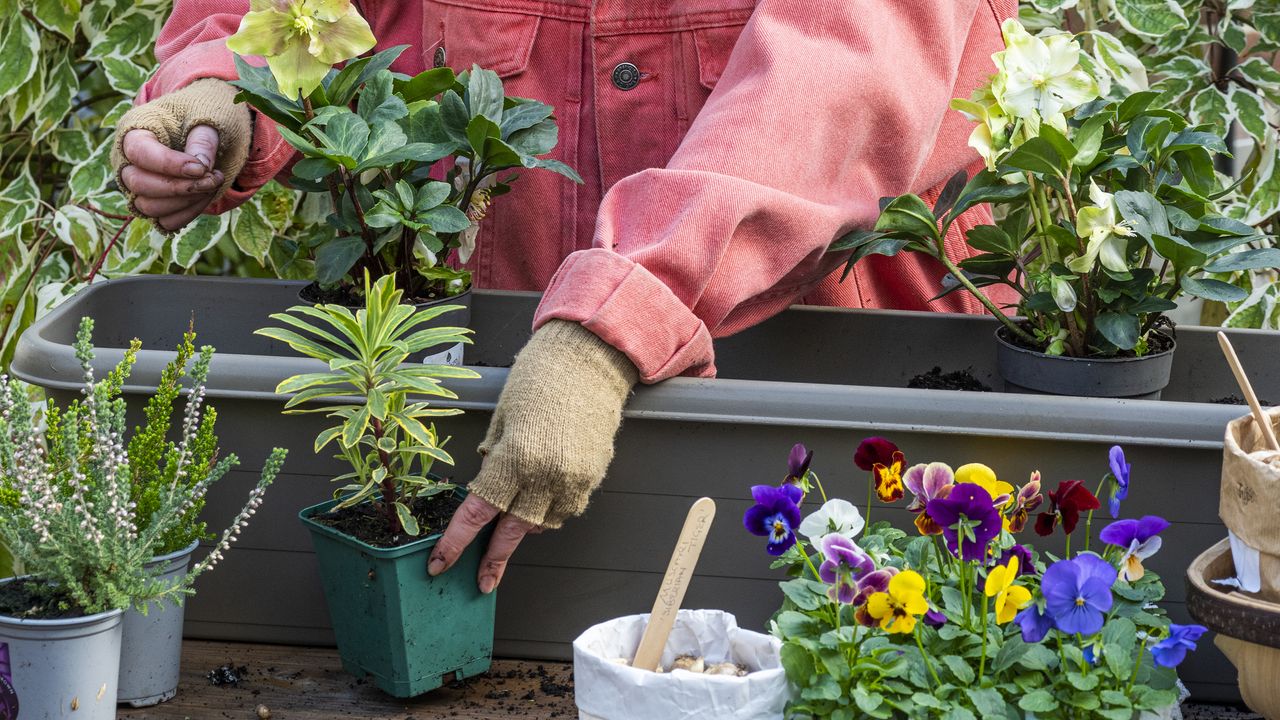

With long, dark nights and short, cold days, winter can take its toll on our mental wellbeing. Those halcyon days of summer sunshine seem like a distant past, and it feels like the garden will never awaken from its seasonal slumber.
However, it’s the ideal time to dust off the cobwebs and get busy with some joy-sparking winter garden projects that will restore your sense of optimism.
Not only will gardening at this time of year help to keep your body and mind active, but it will enable you to make preparation for the growing year ahead and get a head start on your goals.
So, wrap up warm and get outside, with our pick of projects that will enable you to make the most of your garden in even the coldest months of the year.
1. Plant up colorful containers
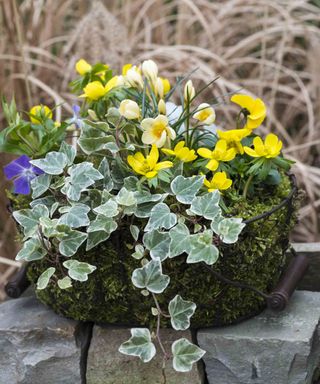
Winter gardening in pots is such a wonderful activity to beat seasonal blues. Position a pair of pots on either side of a doorway, plant up a cheerful window box, display hanging baskets in a dull corner – there are so many ways to add color and interest.
Pansies, snowdrops, cyclamen, heather, and hellebores are all good flower choices. Add structure with greenery, such as boxwood or arborvitae.
When planting containers, follow the rule of ‘thriller, filler, spiller’. This means that a container should include a statement ‘thriller’ plant, which is the standout focal-point of the display; a ‘filler’ plant, to add texture and fill in the gaps; and a ‘spiller’ plant, which trails over the side – ivy is a classic example.
Gardening tips, videos, info and more delivered right to your inbox!
Sign up for the Gardening Know How newsletter today and receive a free copy of our e-book "How to Grow Delicious Tomatoes".
Planting to this rule will ensure your containers look well-rounded and have a professional quality.
2. Create a haven for birds
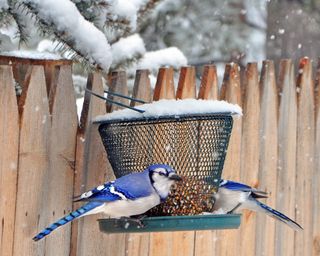
There are few things more uplifting on dark winter days than watching colorful birds dart around the garden.
You can attract birds to your garden by creating a bird feeding station. Bear in mind that different types of birds prefer different food and feeder types, so provide a mix of options – a hopper feeder, table feeder, and suet feeder are a good place to start.
Invest in a water source – ideally a heated bird bath – to ensure feathered friends have somewhere to drink and to bathe. Consider putting up nesting boxes to attract more birds to set up home in your garden.
For future winters, it’s worth growing plants to feed animals, which will create a welcoming habitat. Plant trees and shrubs with winter berries to provide a natural food source for birds.
3. Create a cozy garden corner
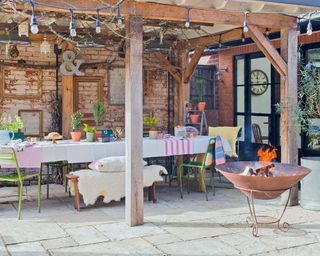
Nothing feels as cozy as being wrapped up warm in cold weather. It’s why the Scandi hygge lifestyle is so appealing.
If you have a covered outdoor area or garden building, then it’s the perfect spot to set up a warm living area. Alternatively, add a firepit table to the patio or an area of the garden that receives some shelter from the wind.
An outdoor heating source, such as a patio heater, is also invaluable for making an outdoor space suitable for entertaining on even the bleakest of winter days.
Pull up a chair and add faux fur throws and cushions, then display candle holders and fairy lights to add atmosphere.
4. Make a winter wreath
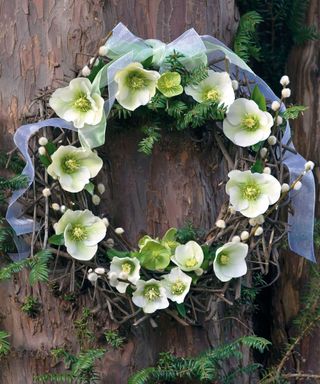
A wreath is not just for Christmas. Once the festive season is over, a DIY winter wreath made using natural materials from the garden will add a beautiful decoration to your front door that will uplift you every time you return home.
To make your wreath, you will need to gather foliage, flowers, berries, fruits, and other items from your garden. Alternatively you can forage for them on seasonal walks.
You will need a wreath base to add your foraged treasures to. For a quicker project, purchase a ready-made twig base; otherwise, use a wire wreath frame and cover it in moss, which will help the wreath to retain moisture. Simply affix clumps of moss to the frame using florist’s wire.
Once the base is ready, trim your foliage to size and arrange in a circular fashion around the wreath. If pushing the stems into the moss doesn’t secure them well enough, then use florist’s wire.
Next, add any flowers and berries to finish the wreath, before finishing with other foraged items, such as pine cones or seed heads, if desired.
5. Plant a tree

There are few greater things you can do for the environment than to plant trees. They clean the air, contribute to good biodiversity, and they can also add to the value of your home.
Winter is an ideal time to plant trees – particularly bare-root trees, which tend to ultimately be stronger, healthier specimens. Unlike trees supplied in containers or wrapped in burlap, bare-trees have no soil surrounding the roots.
To plant a tree, dig a hole two to three times as wide as the root ball, and slightly shallower. If the soil is difficult to work with, you can dig in compost or well-rotted manure, which will also fertilize the tree. Remove any rocks as they can affect the root spread.
Place the tree in the hole and backfill with soil, checking that the trunk is straight. You should only fill in around the tree up to the root crown, but do not leave any roots exposed. Firm in the soil and give the tree a good watering – doing so regularly until it is established.
6. Organize the potting shed or greenhouse
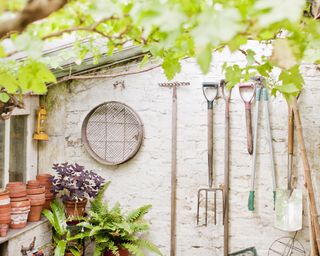
Cleaning and tidying your shed or greenhouse will get you excited about the growing year ahead, and help you to start making plans for spring.
Start by decluttering – get rid of any junk, broken pots, old bags of potting soil, and seeds that are well past their expiry date. You can test seed viability before throwing away the packets.
Next, give the whole space a thorough dust and sweep out, before washing the windows and cleaning down any work surfaces. Wash dirty plant pots, and clean and sharpen tools. Organize where you would like everything to go.
Once you have cleaned and tidied the space, it will be much easier to see what gaps you have in your toolkit, so you can get ready for spring. Although we bet you will be itching to get planting before then.
7. Start sowing seeds

The garden may still be in hibernation, but the potting shed can be a hive of activity in the winter. This is especially true if you can benefit from greenhouse gardening to get a head start on the growing year. Alternatively, you can utilize windowsills inside.
There are plenty of crops that can be started off in winter – start chitting potatoes, sow onion seeds, plant a windowsill herb garden, and even get a head start with strawberries.
For the flower garden, you can start with sweet peas, cosmos, snapdragons, lobelia, and many more.
Once those seedlings start to poke through the soil, we promise you'll be brimming with pride and optimism for the growing season ahead.

Melanie is an experienced gardener and has worked in homes and gardens media for over 20 years. She previously served as Editor on Period Living magazine, and worked for Homes & Gardens, Gardening Etc, Real Homes, and Homebuilding & Renovating. Melanie has spent the last few years transforming her own garden, which is constantly evolving as a work in progress. She is also a passionate organic home grower, having experimented with almost every type of vegetable at some point. In her home, Melanie tends to an extensive houseplant collection and is particularly fond of orchids.
-
 Best Tomatoes For Containers: 10 Tastiest Varieties For Plentiful Produce In Compact Areas
Best Tomatoes For Containers: 10 Tastiest Varieties For Plentiful Produce In Compact AreasThese are the best tomatoes for containers that prove you don't need to have a large space or elaborate garden to grow delicious produce.
By Bonnie L. Grant
-
 Ultimate Potted Flowers For Spring: 8 Brilliant Blooming Options for Spring Containers
Ultimate Potted Flowers For Spring: 8 Brilliant Blooming Options for Spring ContainersCelebrate the most uplifting of seasons with the most dazzling container flowers imaginable. Here, we present some of the loveliest potted flowers for spring…
By Tonya Barnett